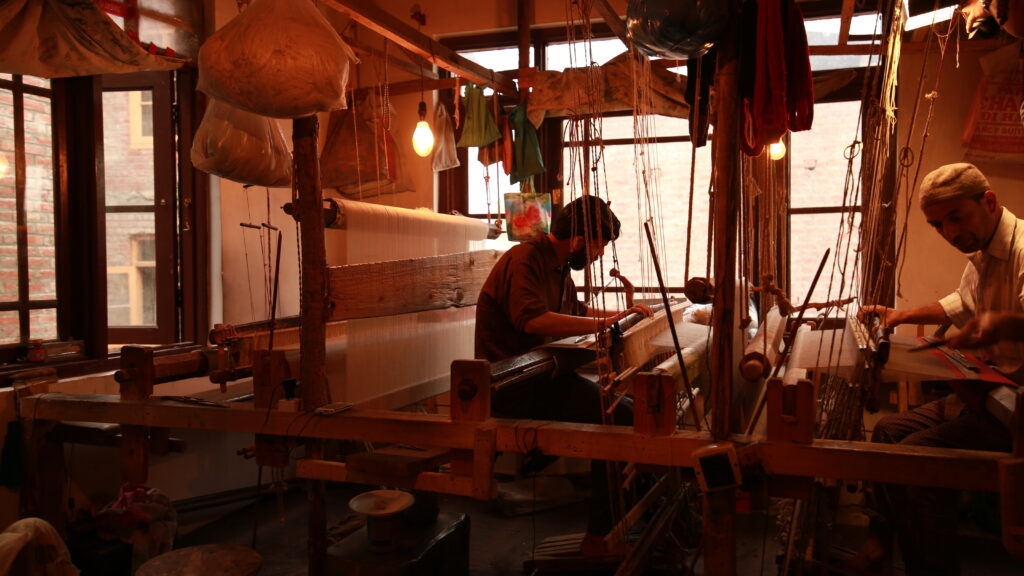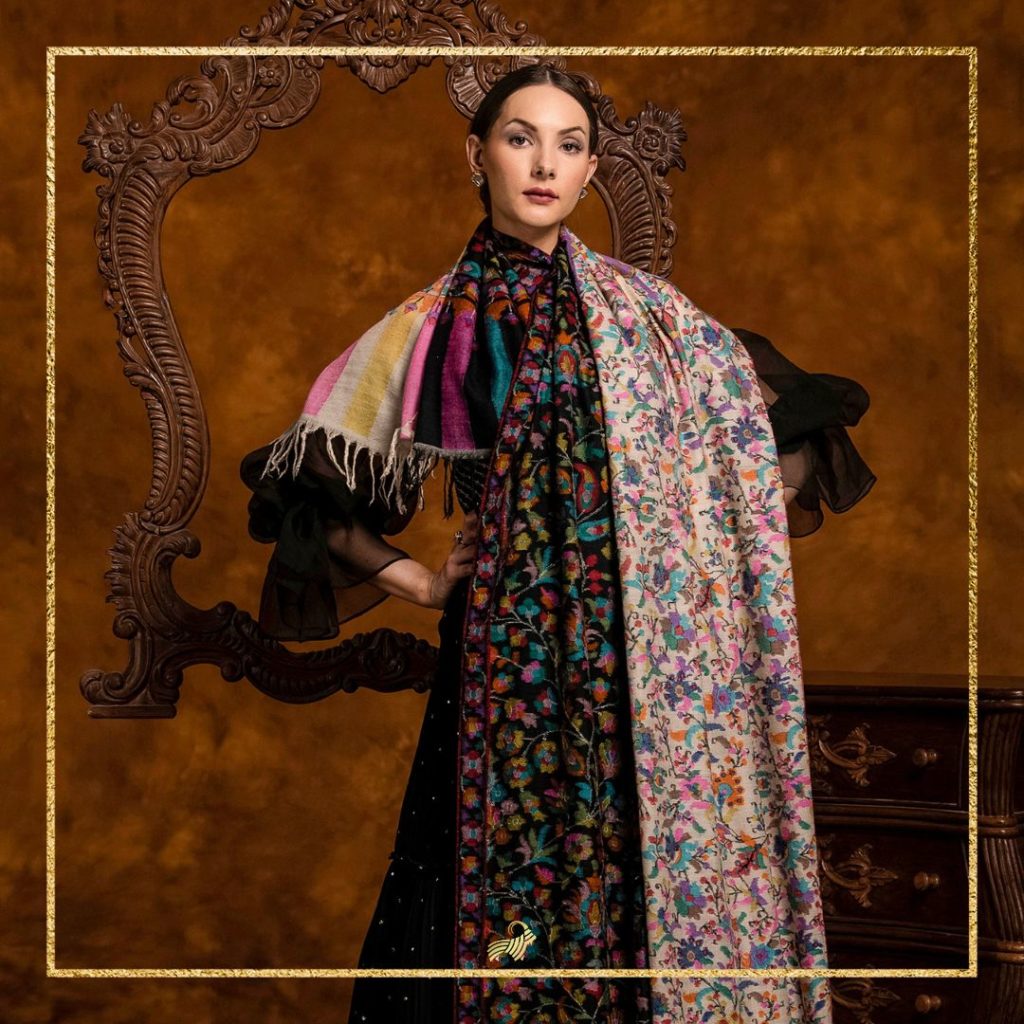Pashmina is the craft and the wool procured for it is the finest Cashmere. Cashmere is the finest wool produced on a rare goat's belly, neck, and ears region. They are called the Pashmina Goats. It is the Capra Hircus species of cashmere-producing Goats. The beauty of Pashmina is in the process of crafting the finest wool. The definition of fineness is reflected in the journey from Ladakh to Kashmir. The essence of Pashmina finds a way toward the genuineness and authenticity of the finest Cashmere.
Various breeds of Goats all over the world produce Cashmere wool. The numerous breeds are; Tibetan, Luliang, Hexi, Zhonghwei, Changhthanghi, etc. The rarest breed of goats is the Changhthanghi Goat which produces the finest Cashmere. The goats are called Changra goats or Pashmina goats. In addition, the Goats produce fine Cashmere wool once every year. Therefore, only around 80 to 170 gms of Ladakhi Cashmere are produced during a year. Therefore, considered the rarest. Also, other breeds of it produce several times more as there is almost 400 million Cashmere eliciting Goats all over the world.
How is the finest wool procured?

The Pashmina Goats live at the feet of Changhthanghi Mountain in Ladakh. The temperature goes to a minimum of 50 C. The goats are curled up in the pelage of wool around their body to protect them from the harsh climate. Eventually, in the summer season, the Goats shed off the excess wool against rocks and trees to get the fresh air of nature. Also, the herders of the Changpa tribe manually comb out the wool. Therefore, the wool is called Cashmere Wool. The thick pelage of wool was then packed to transfer to the valley of Kashmir for a glimpse of Pashmina Art.
The Pashmina Craft of the finest Cashmere
The Art of Pashmina begins as soon as the premium packets of fine Cashmere wool go through their cleaning process. The fine Cashmere wool is cleaned, dried, soaked, and moved ahead. The next step in the Art of Pashmina is the process of Spinning. Mainly, the process is done by womenfolk of the valley. The highly skilled women spin the fine Cashmere wool to the finest cashmere yarn. The meticulous spinning requires a wooden wheel, charkha also called yinder in the local language. The women spin the Cashmere Wool to the Cashmere yarn by spinning the wheel and at the same time elongating the wool to the yarn. Afterward, the Cashmere yarn is supremely whirled on the spindles with the thanchor, a wooden stick. Also, the process is called pranch. These are the basic steps in the curation of Cashmere yarn from the fine Ladakhi Cashmere wool.

Further, in the Art of Pashmina is the process of weaving. The weaving process is mainly done by the menfolk of the valley. The highly skilled artisans set up the handlooms in the local workshops/ Karkhanas. Afterward, the Cashmere yarn is brought up to the looms and the artisans work precisely with diligence. Thus, creating fine Cashmere fabric from meticulous Cashmere yarn. Thus, the Cashmere fabric further goes on to the designing step of Pashmina Art which is mainly done by men and women.
Various designing procedures are done on the Cashmere Fabric to get premium quality accessories. The luxurious quality Cashmere Scarves for Men are one of a kind. In addition, the Pashmina Shawls for men are highly luxurious. Also, the explicit designing of Men's Cashmere Scarves requires highly skilled artisans who have been serving the Pashmina Art with their high skill for generations.
How did Pashmina come into being?
It all started when a Persian saint was traveling across the globe. Mir Syed Ali Hamdani was a sage from the Middle East. The footprints of a saint Mir Syed Ali Hamdani from the middle east came to Kashmir with 700 craftsmen to adorn the beauty of the valley and to spread the holy message. He rested his feet in the region of Changhthanghi Ladakh. Thus, the saint landed its appearance in the Changhthangi Mountain in Ladakh. While perceiving nature, he locked his eyes on the Goat of marvelous wool. Awestruck with the softness and fineness of the wool, he made socks out of it and gifted them to the Sultan Zain-ul-Abideen of Kashmir Valley. Perceiving the beauty of Cashmere wool, suggested making an industry that cultivates the Pashmina in desirable styles. Even the name Pashmina, derived from the Persian word, pashm, meaning "the soft gold" is exquisite in being.
Also read: TYPES OF WOOL | KNOW WHAT YOU ARE WEARING
Pashmina.com embraces the Craft

We, at pashmina.com, embrace the beauty of handicrafts of Pashmina Craft. There is ethical procurement and glorious crafting. The beauty of Pashmina Art is the commemoration of highly skilled artisans. Artisans have inherited the craft through generations and there is an essence of intricacy and luxury in each masterpiece at pashmina.com.
Also read: HANDMADE PASHMINA VS MACHINE MADE PASHMINA - THE DIFFERENCE